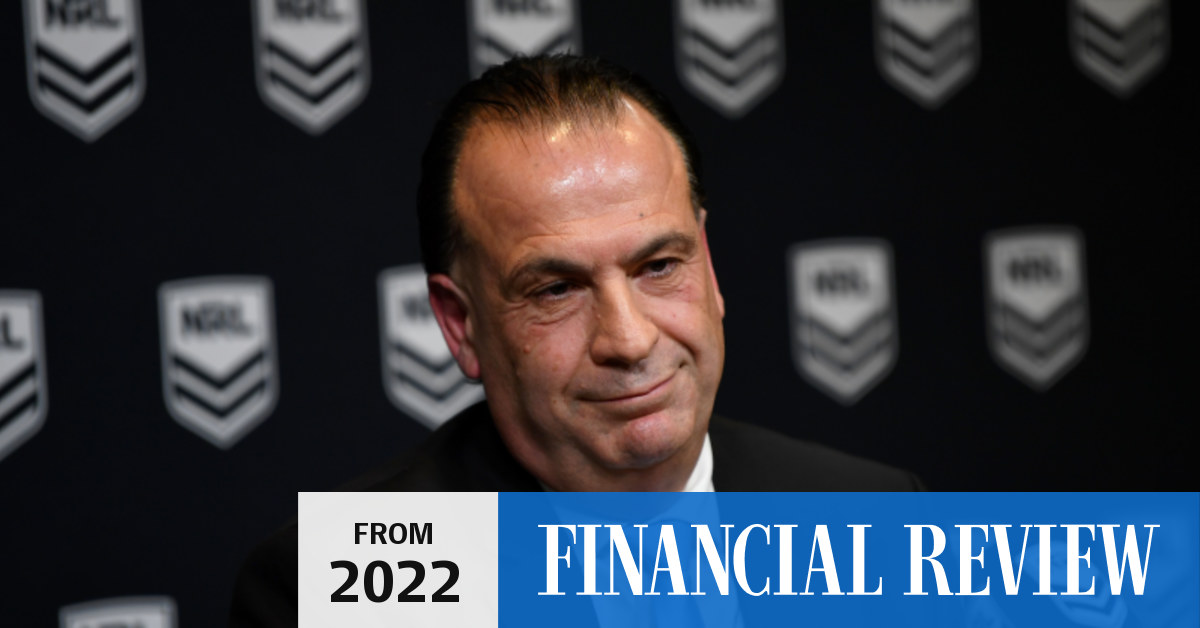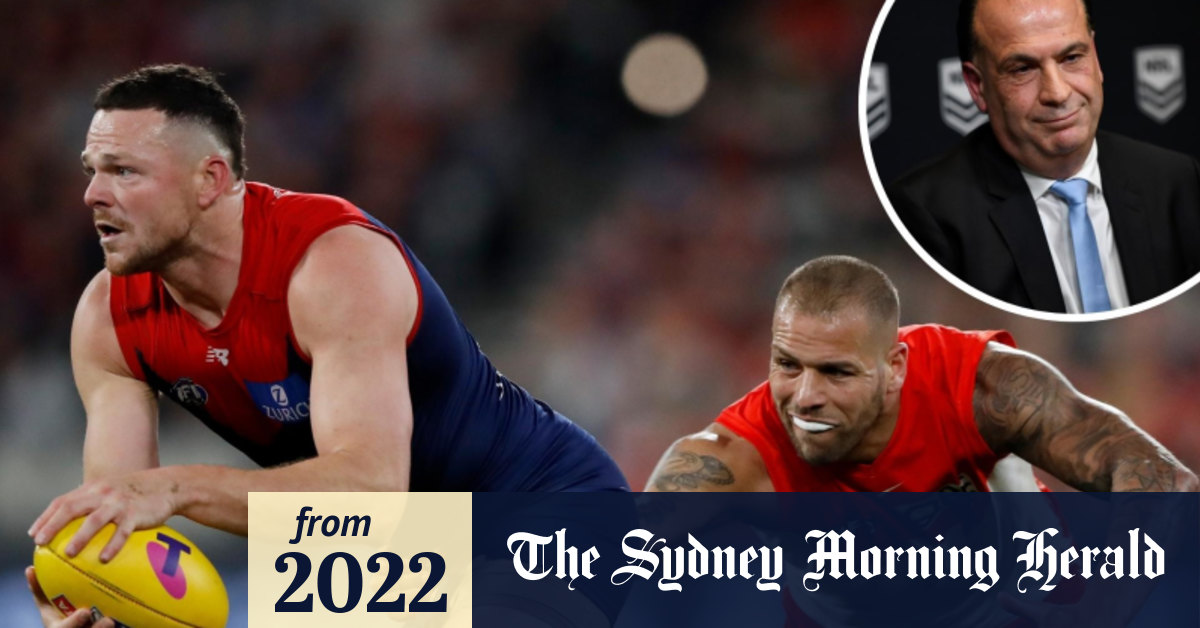Can someone cut and paste please
Pressure continues to mount on the country’s top rugby league executives after the AFL was able to secure a $4.5 billion broadcast rights deal, raising questions about a large financial gap developing between Australia’s two football codes.
The Australian Rugby League Commission chairman Peter V’Landys, along with NRL executives, took the decision to extend the broadcast rights deal with Nine Entertainment and Foxtel at the end of 2021 – in the midst of the COVID-19 pandemic.
Australian Rugby League Commission president Peter V’landys. NRL Photos
That decision has come under scrutiny over the past week, particular as the rights were not subject to a similar competitive tender process which saw the AFL clinch its record seven-year deal.
The NRL’s CEO Andrew Abdo defended the broadcast partnership which will kick-in from 2023. He told The Australian Financial Review the AFL’s moves showed there would be interest from competing broadcasters when the game negotiates its rights beyond 2027.
“The NRL has never been financially stronger,” Mr Abdo said. “Last financial year we recorded a $43 million surplus – much larger than any sporting code.”
“The AFL deal announced this week extends four years beyond the expiration of the new NRL deal. The increased interest in sports rights sets the NRL up to grow our financial strength even further for our next rights.”
‘An absolute disaster for the NRL’
But news of the AFL’s bumper deal continues to reverberate around the NRL. On Sunday, The Sun-Herald’s NRL columnist Danny Weidler reported that club bosses are “seething” that the AFL was able to negotiate a deal that would reportedly leave the NRL between $100 to $170 million worse off each year.
Dr Hunter Fujak from Melbourne’s Deakin Business School and author of the recent book Code Wars - The Battle for Fans, Dollars & Survival said the deal was “an absolute disaster for the NRL” because the AFL now has millions more to fund grassroots operations.
Paramount executive vice president Beverley McGarvey says sport has become a bigger priority since launching its streaming service last August. Rhett Wyman
“When you have that much more money over and above your biggest competitor, that translates to hundreds of more development officers in NSW and Queensland, which can further erode the cultural strength of rugby league in its heartland,” he said.
Last week, the academic produced an economic analysis showing that the AFL could be getting more than 50 cents of every $1 going from broadcasters to Australia’s four major football codes by the middle of this decade. Those numbers are believed to be circulating among some NRL stakeholders.
A source close to the NRL said the numbers were incorrect because they included the AFL’s deal with Telstra and free advertising attached to the agreement, known as contra. But they conceded there will be a financial gap between the codes by 2025.
“I liken the situation to the Tour de France sprint, where the leader whips away and creates a gap to the field,” Dr Fujak said. “This puts such a gap between the AFL and the NRL, soccer and rugby union that you could see this as the singularly momentous act in the battle between the codes.”
A third player emerges
During an interview last week, Mr V’Landys said the NRL would be negotiating the next rights to 2031 “pretty soon” and assured the game “we’ve got a few things up our sleeves”.
But the executive also took credit for keeping Foxtel afloat during the COVID-19 pandemic by extending the current deal – comments which have irked some within the pay-TV company.
There are reasons for Mr V’Landys and NRL executives to remain bullish. Paramount/Channel 10 were in the final hunt for the AFL rights last week, which suggests the US-owned broadcaster could push Channel Nine and Foxtel if they bid for ownership of the rugby league rights.
As AFR Weekend reported, Paramount/10 came in second for the AFL rights, bidding around $570 million cash a year in an effort to take the prized asset from under the noses of Channel Seven and Foxtel.
That strong showing raised the eyebrows of many within the media industry, particularly as potential bidding for rugby league, cricket and tennis are on the horizon.
Paramount/Channel 10 is currently home to the A-League soccer, but the broadcaster’s lead Australian executive Beverley McGarvey appears to have the green light to poach more local sport. US-based Paramount Global chief executive Bob Bakish was among those who personally called AFL CEO Gill McLachlan last Monday to make the media group’s final pitch.



